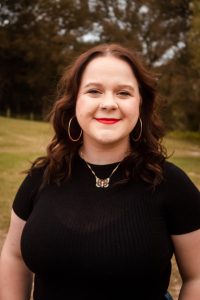Reaching Out: Mental Health Resources on Campus
On Nov. 4, 2019, president Ruth Watkins announced a $150 million commitment from the Jon M. and Karen Huntsman family to establish the Huntsman Mental Health Institute at the University of Utah. (Courtesy of the University of Utah)
May 9, 2020
Across the University of Utah there are numerous resources for students to access — including programs that focus on mental and physical health and well-being.
In Utah, there has been a state-wide effort to address and destigmatize mental health. The initiative comes from Utah’s high suicide rates in past years. As incoming students find themselves adjusting to life at U, juggling classes, homework and work — there are organizations that can help facilitate the transition to university life.
The Women’s Resource Center
The Women’s Resource Center was founded in 1971 by women’s faculty and staff can be found in the union. Kristy Bartley, a counseling coordinator, works at the women’s resource center to help students address their needs.
Students can come in for more than just counseling. Bartley explained the resource center is also there to help with financial needs, advocacy and emergency grants.
Around the nation, there’s a recurring problem with counseling services — the waitlist. The waitlist can take centers several weeks to months to see a new student. Bartley acknowledged this issue in counseling services.
“[It’s] an ongoing problem, because we can’t hire ourselves out of a waitlist. We know that. Although we have just hired someone who started last week,” Bartley said.
The Daily Utah Chronicle reached out to the university counseling center to speak on this issue, they did not comment at this time.
There are various factors that influence the waitlist period. Bartley said it depends on what time during the semester students come in. She said there’s more availability at the beginning of the semester than in the middle.
“That’s also true for all of the counseling resources on campus. You know, in the beginning, everybody has time on their schedule, by mid-semester or right before midterms, things are full. And so, I would say that it could be you know, as much as two or three weeks and we’ve had people come in and do the initial contact but they don’t do an intake until we’re ready. Until we have a space,” Bartley said.
The counseling process for the WRC involves a weekly series called an initial contact. The initial contact is a 15-minute meeting with a counselor which helps assess what a student might need and the best way to help them whether that be through counseling or another resource.
The women’s clinical team is made up of seven individuals. Bartley said they do all kinds of case management, which includes helping students find housing and assisting in writing letters for students with special accommodations.
“You know, anything that a student needs, we try and meet that need. And we have wraparound services, we have an education specialist and so we’re trying to make sure that we’re doing a more holistic job in supporting the students,” Bartley said.
According to the WRC website, the women’s center approach to counseling is explored in the context of gender, power and cultural influences within life experiences and concerns. The women’s resource center also works with men.
The ACES
Another mental health and wellness resource on campus is the ACES peer health educators. Run by the Center for Student Wellness, the ACES are students on campus that specialize in different areas of wellness that develop and implement events and programming.
They have three focus groups: violence prevention, sexual wellness and harm reduction. Each group hosts different themed presentations and events.
In addition, they provide wellness presentations, office hours for students, STI clinic and regularly participate in events put on by the Center for Student Wellness. They also provide peer-to-peer wellness counseling.
Marissa Castillo, a newly graduated senior in the college of health promotion and education, focused on violence prevention. Her role as a member of the ACES was to reduce stigmas around rape culture and teach about bystander intervention.
“Being able to talk to another person that is going through a similar situation as you or understand certain aspects for your experience can make reaching out for help more comfortable,” Castillo said, “I think that we are able to relate to each other better and offer support in a different way due to personal experiences.”
ACES receive training in different resources, so they can offer and connect students to individuals and places all across campus.
Castillo said there are many ways to balance your mental health throughout college and encourages students to get involved on campus and look for support groups through joining different student groups, roommates, classmates or even reaching out to the ACES.
“Finding those support groups will not only help you make friends but help reduce the shock of transitioning to a new chapter of life,” she said.
Castillo said the best way to maintain balance in school and mental health is to set up a good support system and check in often with how one personally feels.
“I always try to pay attention to how I am currently feeling and balance out ways to relax and unwind after a stressful week,” she said. “Understanding when you are starting to struggle with your mental health will help you become proactive in trying to find ways to help improve your health or know when to reach out to other for support.”
For Castillo, the ACES gave her not only a sense of belonging on a big campus but also knowledge and access to resources on campus that she didn’t even know were available.
“Don’t be afraid to ask any office on campus for questions or help, they are all knowledgeable and will connect you with the right resources or people depending on your needs,” Castillo said.
The ACES can be accessed through office hours at the Center for Student Wellness in the Student life center, tabling across campus and a contact form on their website. They also regularly check their Instagram DMs @uofuaces.









